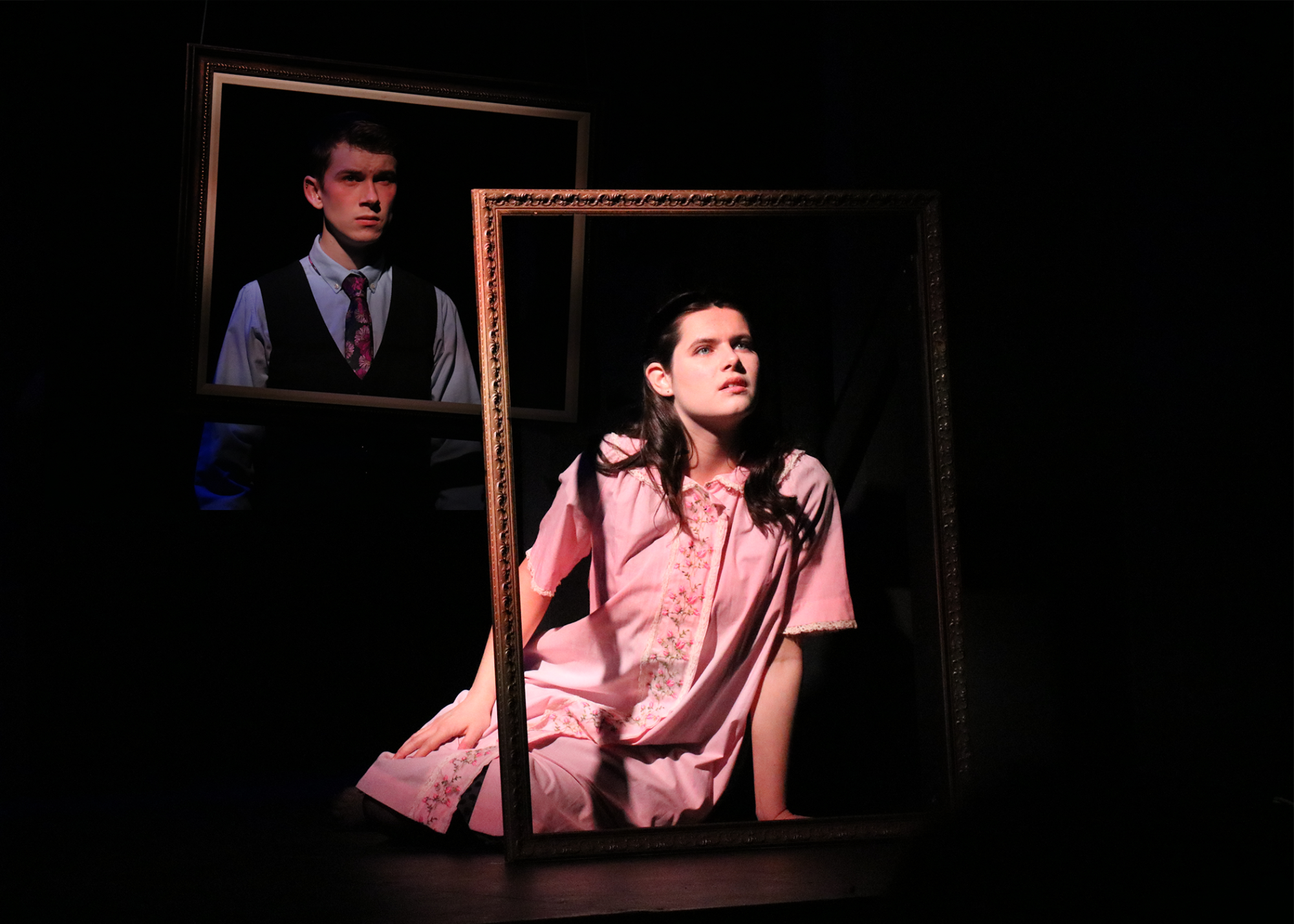On Feb. 13-15 in Eldred Hall, six students from Players’ Theatre Group (PTG) came together to rationalize the concept of melancholy. “Melancholy Play” is an hour and fifteen minute-long production written by Sarah Ruhl that first premiered in 2002. Directed by second-year Ave Tallarida, it tells the story of a melodramatic bank worker named Tilly and her melancholy-driven adventure, featuring the many paramours she meets and captivates along the way.
Tallarida mentions that they first came across the play when a middle-school friend starred as Tilly in their high school production and they were invited to watch. “I remember we both were shocked at how much we liked the show, and it always stuck in my mind as a production that I would potentially want to explore further,” Tallarida said. “[After] working with PTG, I realized that this show was a really good fit for the kind of productions we tend to lean towards. Plus, I started to find the throughline of nostalgia more and more interesting, especially as I have discovered that college students are often very nostalgic.”
With a company of college actors like these, it’s difficult to disagree with that statement. Third-year Margot McCann’s Tilly is a whimsical creature with energy that captivates even the most grounded audience member. Fourth-year Ethan Teel’s Frank and second-year Johanna Perry’s Frances both showcase a perfect example of the effects of melancholy—how even the most mundane moments in life can spark a fire within you and drive you to feel that spark again, despite time coming to an end. Fifth-year Asha Kartha’s Joan and second-year Gryffin Hauenstein’s Lorenzo both added a heavy dose of humor into the mix—their dialogue had the audience in stitches. Each also provided a notable presentation of melancholy in motion, with the former noticeably warming up to Tilly upon first meeting her, and Lorenzo whose needy passion grew with each therapy session Tilly showed up to. First-year Kai Tibbitts’s Julian is equally deserving of praise for their viola performance throughout the show. Watching from the audience, it was almost as if they unintentionally carried themself with a sense of pensiveness and melancholy, cloaking them from view until their well-deserved recognition during the play’s final moments thanks to the heaps of praise from the rest of the cast.
Upon first impressions, the play’s storyline and dialogue may seem rather alien, perhaps even similar to an art-house film. The countless almond references may boggle the average theater-goer. However, it is possible to grasp the thesis of the play: “We all feel passion and sadness for things that come to an end, and possess the ability to find our friends through love when they need it the most,” as Tallarida writes so concisely in their director’s note. The audience surely seemed to agree, with cheers of support and raucous laughter laced throughout the Friday night show.
Perhaps the most commendable feat is the overall design of the show itself. Upon walking into Eldred Auditorium, you are greeted with an elaborate set design that seems to straddle dream and reality, with your average furniture pieces onstage with random objects suspended from the ceiling, such as laser discs, picture frames and even a single crutch. All of this is tied together by a vibrant blue hue that invokes a melancholy feeling and is a treat to the eyes.
Veteran audience members of PTG’s shows will be no strangers to the level of quality found in their productions. Newbies are sure to be stunned by the efforts of this truly talented company of students from different corners and departments on campus. “Melancholy Play” adds to PTG’s streak of creating engaging productions with timely messages that will stick to the soul. “At its core, it’s a story about love and nostalgia,” Tallarida remarks. “How we need to meet people where they are at to really give them the help they need. That melancholy and depression are not the same, and embracing melancholy can be a very beautiful thing.” They certainly made a production to match.



